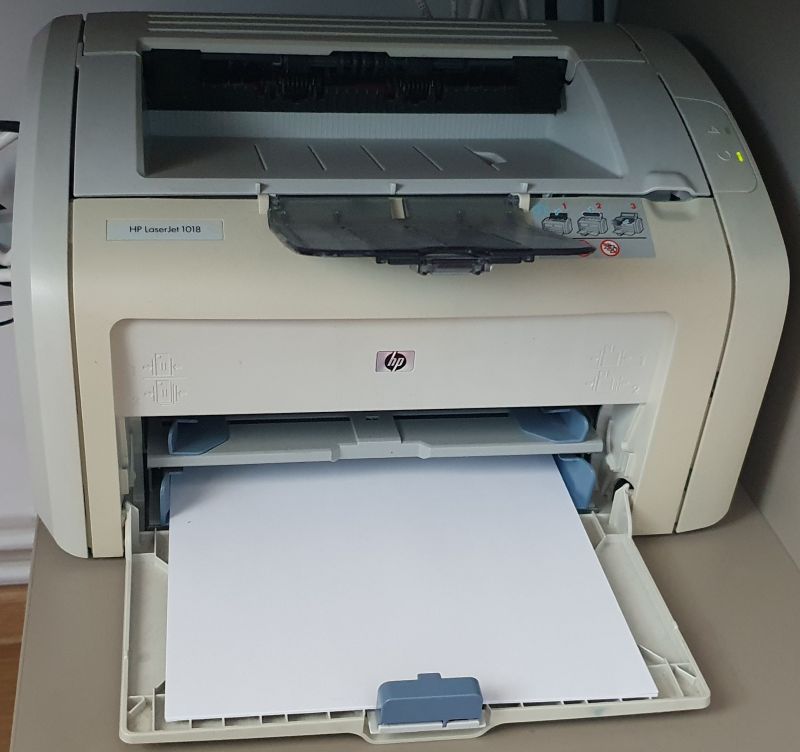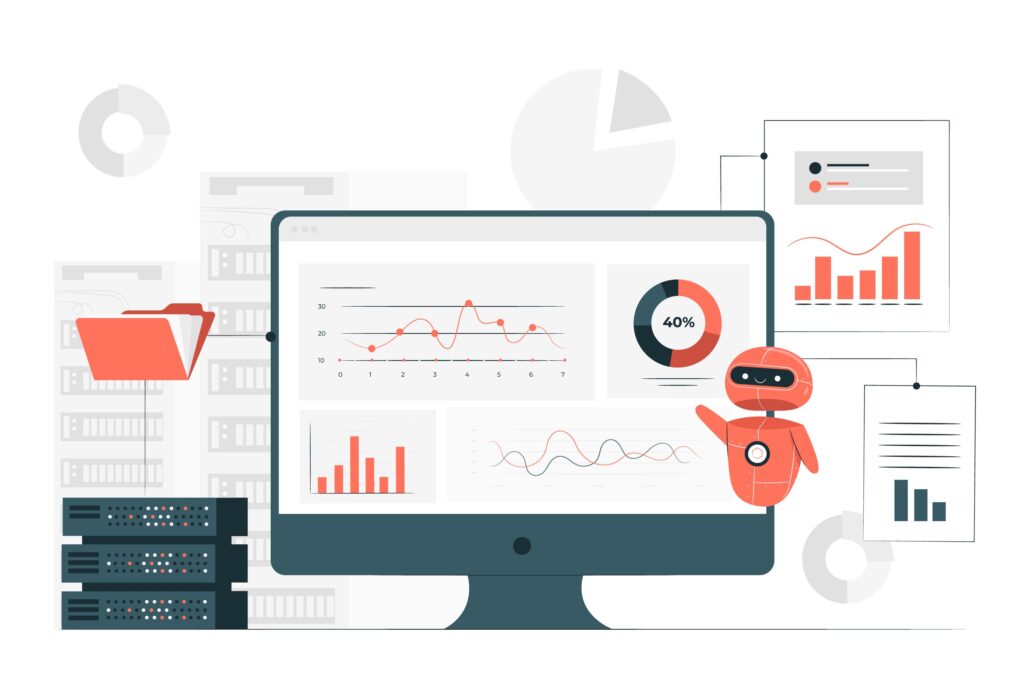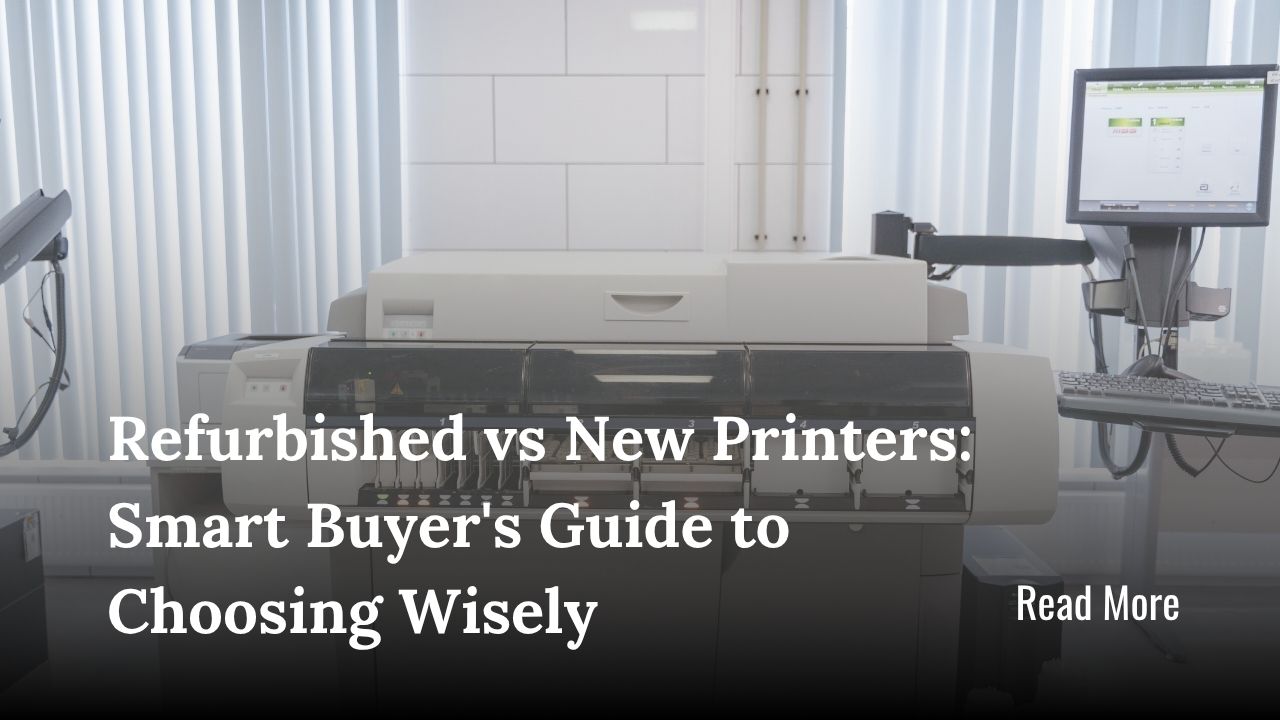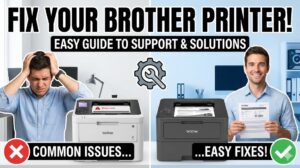Introduction
Trying to decide between refurbished vs new printers? You’re making a smart move by doing your research first. Printers can be expensive, and nobody wants to waste money on the wrong choice.
Here’s the thing. Refurbished printers cost way less than new ones. Sometimes you save 50% or more. But are they reliable? Will they last? These are the questions keeping you up at night.
New printers come with that fresh-out-of-the-box appeal. Full warranties. Latest features. Zero mystery about their history. But they also come with much higher price tags.
This guide breaks down everything you need to know. We’ll look at real pros and cons, not marketing fluff. By the end, you’ll know exactly which option makes sense for your situation and budget.
What Are Refurbished Printers?
A refurbished printer is a previously used or returned device that’s been restored to working condition. Think of it as a second-hand printer that’s been given a professional makeover.
Here’s what typically happens. Someone returns a printer to the manufacturer or retailer. Maybe it had a small defect. Maybe they just changed their mind. The printer goes back to a refurbishment center.
Technicians inspect every part. They replace worn components. They clean everything thoroughly. They test all functions to make sure it works like it should. Finally, they repackage it for resale.
Types of refurbished printers:
Factory refurbished – The original manufacturer does the refurbishment. These are the most reliable option. HP, Canon, Epson, and Brother all have factory refurbishment programs.
Third-party refurbished – Independent companies buy used printers and refurbish them. Quality varies more with these. Check reviews carefully before buying.
Open-box returns – Someone bought the printer, opened it, and returned it unused. These are barely used but can’t be sold as new anymore.
Not all refurbished printers are the same. The source matters a lot. Factory refurbished units usually come with warranties, which gives you protection.
8 Key Differences Between Refurbished vs New Printers

1. Price Difference
This is where refurbished printers really shine. You typically save 30-60% compared to buying new.
A new HP LaserJet might cost $400. The refurbished version? Around $200-250. That’s serious savings, especially if you need multiple printers for a home office.
New printers rarely go on sale for more than 10-20% off. Even during Black Friday, the deals aren’t usually that impressive. Refurbished prices beat sale prices almost every time.
The money you save can go toward better ink cartridges, extra paper, or other office supplies you actually need.
2. Warranty Coverage
New printers come with full manufacturer warranties. Usually one year, sometimes longer. If anything goes wrong, you’re covered.
Refurbished printer warranties vary more. Factory refurbished units often include 90-day to 6-month warranties. Some manufacturers offer the same warranty as new printers on their refurbished models.
Third-party refurbished printers might have shorter warranties or none at all. This is a red flag. Avoid any refurbished printer without at least a 30-day warranty.
Read the warranty terms carefully. What does it cover? Who pays shipping if you need repairs? These details matter when you’re comparing options.
3. Reliability and Lifespan
New printers should work perfectly from day one. No surprises. No hidden wear. You’re the first owner.
Quality refurbished printers can be just as reliable. Remember, they’ve been tested and repaired by professionals. Weak components got replaced during refurbishment.
The concern is usage history. How many pages did the previous owner print? Was it maintained properly? With factory refurbished printers, you get some assurance about the refurbishment quality.
In terms of lifespan, both should last several years with proper care. A well-refurbished printer can easily give you 3-5 more years of service. That’s plenty for most home and small office use.
4. Features and Technology

New printers have the latest technology. Faster printing speeds. Better mobile connectivity. Enhanced security features. If cutting-edge matters to you, new is the way to go.
Refurbished printers are usually older models. Maybe last year’s version or even 2-3 years old. The core functions work fine, but you might miss out on newer features like advanced WiFi protocols or voice control.
For basic printing, scanning, and copying, older features work perfectly fine. Do you really need the absolute newest technology? Most people don’t.
Think about what features you actually use. If you just need to print documents and occasional photos, a refurbished model does everything you need.
5. Availability and Selection
Walk into any store or browse Amazon, and you’ll find tons of new printer options. Every brand, every model, every color. Maximum choice.
Refurbished printer selection depends on what’s available. It changes constantly based on returns and trade-ins. You might not find the exact model you want in refurbished condition.
If you’re flexible about specific models, this isn’t a problem. But if you need a particular printer for work compatibility or specific features, finding it refurbished might take patience.
6. Cosmetic Condition
New printers look pristine. No scratches, scuffs, or marks. The plastic still has that glossy finish. Everything smells fresh.
Refurbished printers might show minor cosmetic wear. Small scratches on the case. Slight discoloration. Nothing that affects function, but it’s not showroom perfect.
If appearance matters for a reception area or visible office space, consider this. For a home office or back room, who cares what it looks like as long as it prints well?
Most factory refurbished printers look nearly new. The cosmetic issues are usually minor and hard to notice.
7. Environmental Impact
Buying refurbished is better for the environment. You’re extending a product’s life instead of contributing to electronic waste.
Manufacturing new electronics uses energy and resources. Mining rare earth metals. Producing plastics. Shipping from overseas factories. It all adds up.
Choosing refurbished reduces demand for new manufacturing. It keeps working devices out of landfills. If sustainability matters to you, this is a strong reason to go refurbished.
8. Return Policy
New printers typically have 30-60 day return windows. Don’t like it? Send it back for a full refund. Most retailers make returns easy.
Refurbished printers might have stricter return policies. Some are final sale. Others give you 14-30 days. Check before buying.
This matters if you’re unsure about a model. A generous return policy gives you a safety net. You can test it risk-free.
Additional Insights for Making Your Decision

Beyond the basic comparisons, here are some things to consider when choosing between refurbished vs new printers.
Your Budget Reality – Be honest about what you can afford. A $400 new printer might be perfect, but if you only have $200, a quality refurbished printer beats not having one at all.
Print Volume Needs – If you print thousands of pages monthly, invest in new. The full warranty and fresh components justify the cost. For light home use, refurbished is usually fine.
Where to Buy Refurbished – Stick with reputable sources. Buy directly from manufacturer websites like HP’s Renew program or Canon’s refurbished store. Amazon and Best Buy also sell certified refurbished units with protection plans.
Check Included Accessories – New printers come with starter ink or toner cartridges. Refurbished units might not include these, or they might be empty. Factor this into your total cost.
Brand Reputation – Some brands have better refurbishment programs than others. HP and Canon have strong reputations for quality refurbishment. Research reviews specific to the refurbished model you’re considering.
The Consumer Reports printer buying guide provides unbiased ratings and reliability data that can help inform your decision regardless of whether you choose new or refurbished.
Common Mistakes When Choosing Between Refurbished and New Printers
People make predictable errors when deciding. Avoid these pitfalls.
Mistake 1: Ignoring Total Cost of Ownership
The printer price is just the start. Ink or toner costs way more over time. Some printers have expensive proprietary cartridges.
A cheap refurbished printer with pricey ink might cost more long-term than a slightly pricier new printer with affordable ink. Calculate your yearly ink costs before deciding.
Mistake 2: Buying Refurbished Without a Warranty
Never buy a refurbished printer without warranty coverage. The savings aren’t worth the risk. If it breaks after two weeks, you’re out the money completely.
Even a 30-day warranty is better than nothing. It gives you time to test all functions and make sure everything works properly.
Mistake 3: Assuming All Refurbished Printers Are Bad
Some people think refurbished automatically means low quality. This isn’t true. Factory refurbished printers go through extensive testing. They often work better than new because weak parts got replaced.
Judge each refurbished option on its own merits. Look at the refurbisher, warranty, and reviews.
Mistake 4: Buying New When You Don’t Need Latest Features
Marketing makes us want the newest everything. But do you really need wireless direct printing or mobile scanning if you only print tax documents twice a year?
Be honest about your actual needs. If a refurbished printer does everything you require, the extra features on a new model are just wasted money.
Mistake 5: Not Reading Reviews
This applies to both new and refurbished. Read customer reviews, especially for refurbished units. Look for comments about the refurbishment quality, packaging, and what was included.
Reviews reveal real-world problems the manufacturer won’t tell you about. Spend 10 minutes reading them before spending hundreds of dollars.
FAQs About Refurbished vs New Printers
Q: Are refurbished printers as good as new ones?
Quality refurbished printers from manufacturers can perform just as well as new ones. They’ve been tested, repaired, and certified to work properly. The main differences are cosmetic wear and possibly shorter warranties. For everyday printing needs, factory refurbished printers are reliable. Avoid third-party refurbished units without strong warranties or reviews.
Q: How much money can I save buying refurbished?
Savings typically range from 30-60% compared to new retail prices. A $300 new printer might cost $150-200 refurbished. Higher-end models show bigger savings. During sales, new printers narrow the gap somewhat, but refurbished still usually costs less. Always compare the specific models you’re considering since savings vary.
Q: What should I check when buying a refurbished printer?
Verify these things: Who refurbished it (manufacturer is best), warranty length (minimum 30 days), return policy, what’s included (cables, ink, manual), page count if available, and customer reviews. Buy from reputable sellers only. Check if ink cartridges are included or if you need to buy them separately. Make sure you can return it if it doesn’t work properly.
Q: Will a refurbished printer last as long as a new one?
A properly refurbished printer should last 3-5 years with normal use, similar to new printers. Printers don’t last forever regardless of whether they’re new or refurbished. Lifespan depends more on print volume and maintenance than purchase type. Heavy business use wears out any printer faster. Light home use extends life considerably.
Q: Can I get the same warranty on refurbished printers?
It depends on the seller. Manufacturer refurbished units often come with 90-day to 6-month warranties. Some brands offer the same one-year warranty as new printers on their refurbished models. Third-party refurbished printers usually have shorter warranties or none at all. Always choose options with at least some warranty protection to safeguard your investment.
Conclusion
So which should you choose? The answer depends on your specific situation.
Go with refurbished if: You’re on a tight budget, you need basic printing functions, you don’t print huge volumes, and you’re buying from a reputable manufacturer refurbishment program.
Choose new if: You need the absolute latest features, you print extremely high volumes, you want maximum warranty protection, or you’re buying for a business where downtime costs money.
For most home users and small offices, quality refurbished printers offer amazing value. You get 70-80% of the benefits at 40-50% of the cost. That’s hard to beat.
The key is buying smart. Stick with factory refurbished units from known brands. Check warranties carefully. Read reviews. And be realistic about what features you actually need.
Now you understand the real differences between refurbished vs new printers. You can make a confident choice that fits your needs and budget. Whether you go refurbished or new, you’ll know you made the right decision for your situation.
Share a Printer Across Multiple Devices: Easy Home Setup Guide Read More.




